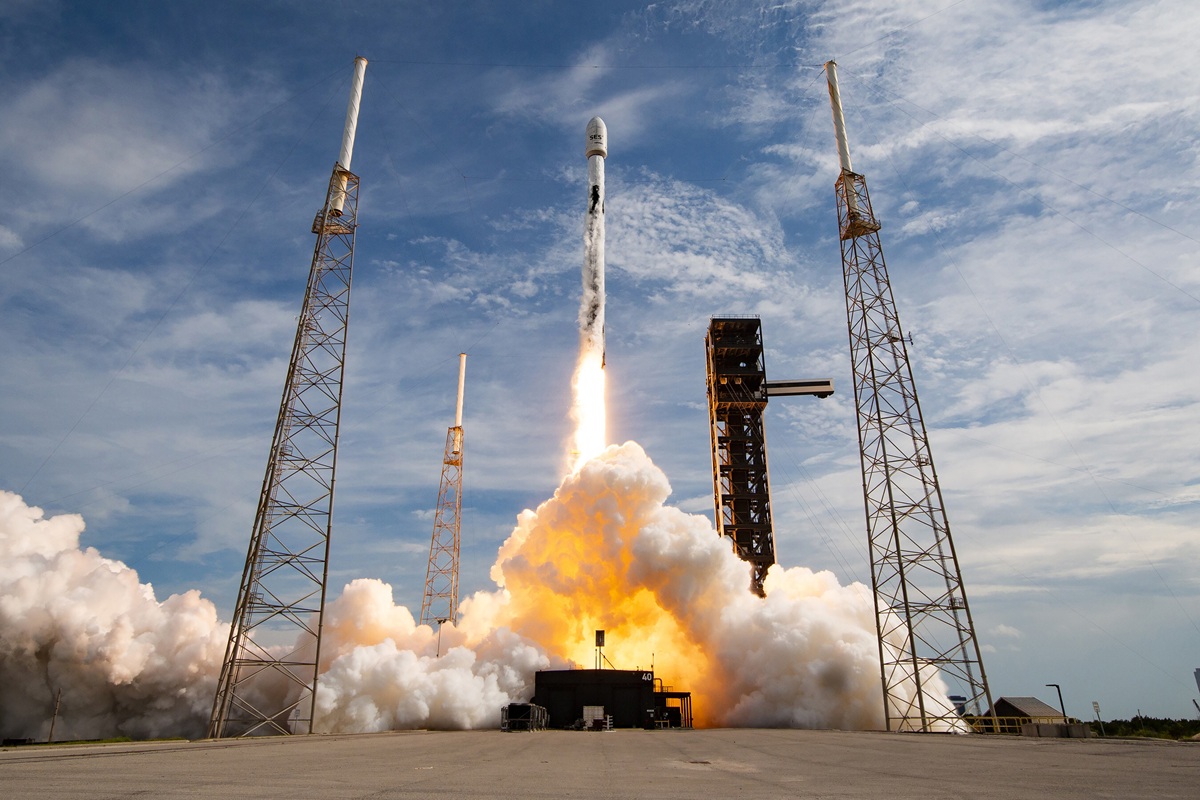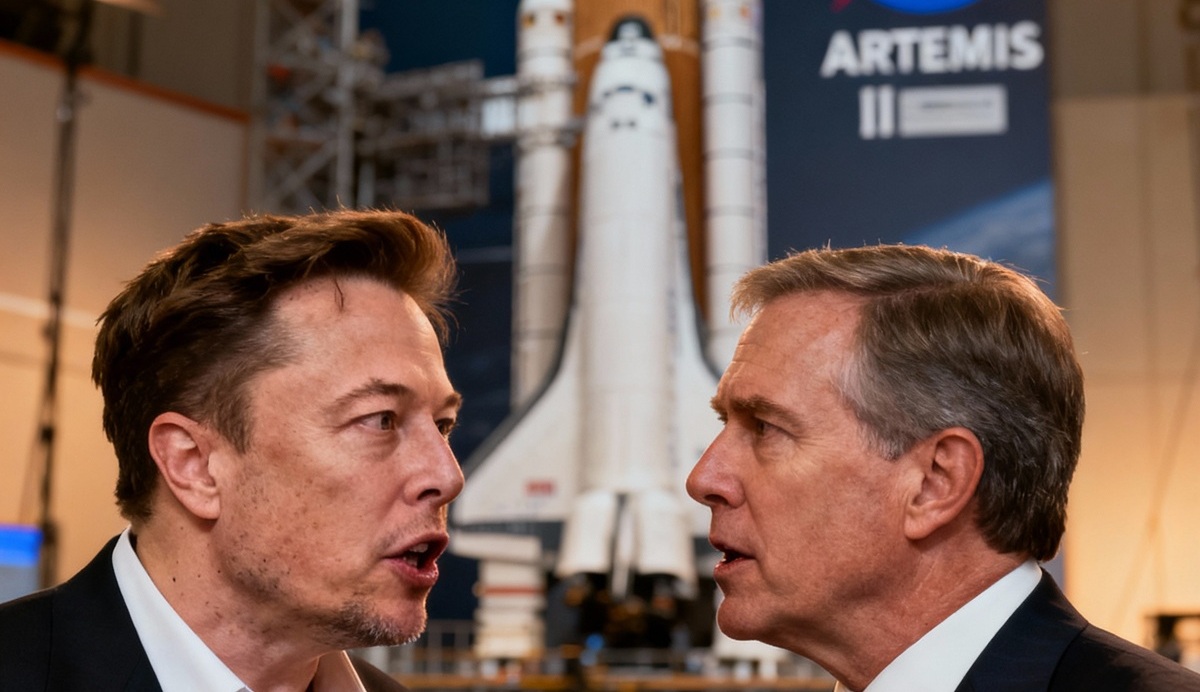Kennedy Space Center, Florida: At 8:14 a.m. EDT on Thursday, the hatch between SpaceX’s Dragon spacecraft and the International Space Station (ISS) opened, marking the successful arrival of the Axiom Mission 4 (Ax-4) crew. The Dragon capsule had docked smoothly at 6:31 a.m. EDT to the space-facing port of the Harmony module, heralding the start of a dynamic two-week mission focused on science, outreach, and commercial activities.
The Ax-4 mission launched at 2:31 a.m. EDT on June 25 from NASA’s Kennedy Space Center Launch Complex 39A atop a Falcon 9 rocket. The crew comprises four private astronauts representing a diverse international team of Peggy Whitson, former NASA astronaut and America’s most experienced space flier;
Shubhanshu Shukla, astronaut from the Indian Space Research Organisation (ISRO); Sławosz Uznański-Wiśniewski, European Space Agency (ESA) astronaut from Poland and Tibor Kapu, mechanical engineer and mission specialist from Hungary
This marks Axiom Space’s fourth private astronaut mission to the ISS, continuing the company’s groundbreaking role in commercial spaceflight.
Peggy Whitson shared her perspective on exploration and extraterrestrial life, “I haven’t seen any extraterrestrial life with my own eyes. But what I have seen is just billions and billions of stars. And this is just our little galaxy. There are billions and billions of galaxies. I know there has to be other life out there because it is so expansive. I’m sure it exists, it may not look or sound like us.” She added, “That is what pushes the idea of exploration and drives the continuous development of technologies further and further to find out about life beyond Earth.” Whitson also expressed excitement about the mission’s international scope: “All of planet Earth is beautiful. India is special as well. It’s relatively easy to pick out India because of the geography. I’m looking forward to seeing it again.”
Indian Air Force Group Captain Shubhanshu Shukla, serving as the mission pilot, sent an emotional message shortly after launch, emphasizing the symbolic importance of the mission for India, “Namaskar, my dear countrymen! What a ride! We are back in space once again after 41 years. It’s an amazing ride. We are revolving around the Earth at a speed of 7.5 kilometres per second. The Tiranga (tricolour) embossed on my shoulders tells me that I am with all of you. This journey of mine is not just a beginning to the International Space Station but to India’s Human Space Programme. I want all of you to be part of this journey. Your chest, too, should swell with pride… Together, let’s initiate India’s Human Space Programme. Jai Hind! Jai Bharat!”
Sławosz Uznański-Wiśniewski, ESA astronaut and mission specialist, expressed his enthusiasm about flying with Whitson, “We consider ourselves extremely lucky to be flying with Peggy, the best commander we could have wished for.” He is part of an ambitious scientific program sponsored by the Polish government and ESA, which will officially begin once he enters the station.
Tibor Kapu, the Hungarian mission specialist and mechanical engineer, brings a diverse background in aerospace technology and space radiation protection. He has undergone rigorous training in space engineering, health, and experimentation, and is eager to contribute to Hungary’s scientific objectives aboard the ISS. Kapu remarked on the significance of the mission for Hungary’s space ambitions, “Being part of Ax-4 is a historic opportunity to push Hungary’s quest for knowledge beyond our planet. I look forward to applying my engineering expertise in this unique environment and advancing our understanding of space.”
After the hatch opening, the Ax-4 crew was warmly welcomed by the seven-member Expedition 73 crew aboard the station. Following the traditional call down to Mission Control on Earth, the private astronauts participated in a comprehensive safety briefing with the station residents to familiarize themselves with emergency protocols and station operations.
NASA Flight Engineers Anne McClain and Nichole Ayers were on duty during Dragon’s approach and docking. McClain commented on the smooth automated rendezvous, “The Dragon’s docking was flawless, a testament to the precision of SpaceX’s systems and the teamwork between ground controllers and onboard crew.”
While the Ax-4 crew settles in, the existing ISS crew continued their vital research and maintenance work.
Anne McClain worked in the Destiny laboratory module, configuring research hardware and processing biological samples. She documented her work extensively with photographs for ground-based analysis.
Nichole Ayers focused on a fluid physics experiment inside the Microgravity Science Glovebox, investigating phenomena that could improve pharmaceutical manufacturing and advance 3D printing techniques in microgravity.
Jonny Kim, NASA Flight Engineer, collaborated with JAXA Commander Takuya Onishi to test a novel biomedical device—a specialized thigh cuff designed to counteract fluid shifts caused by microgravity. Using ultrasound scans and blood pressure monitoring inside the Columbus laboratory, they evaluated the device’s effectiveness in protecting cardiovascular health during long-duration spaceflight.
Jonny Kim shared insights on the thigh cuff trial, “Fluid shifts toward the upper body can cause discomfort and health risks for astronauts. This device shows promise in mitigating those effects, which is crucial for future deep space missions.”
Veteran cosmonaut Sergey Ryzhikov, a three-time space station visitor, began his shift in the Zvezda service module by replacing critical computer components. He later focused on charging batteries for science experiments and activating an Earth observation camera to support ongoing research.
Flight Engineer Alexey Zubritskiy spent his day reorganizing cargo inside the Nauka science module and stowing waste and discarded equipment in the Progress 90 cargo craft, which is scheduled to depart from the Poisk module next week.
Kirill Peskov, another Flight Engineer, conducted ventilation system maintenance in the Nauka module and reviewed radiation exposure data to monitor the station’s environment as it orbits Earth.
The Axiom Mission 4 exemplifies the growing role of private astronauts and commercial partnerships in space exploration. Over the next two weeks, the crew will conduct a variety of experiments spanning biology, materials science, and technology demonstrations. Additionally, they will engage in outreach activities designed to inspire global audiences and promote STEM education.
Axiom Space CEO Michael Suffredini highlighted the mission’s significance, “Ax-4 is a milestone in making space accessible to a broader community beyond government agencies. Our crew’s diverse backgrounds and objectives showcase the potential of commercial spaceflight to drive innovation and international collaboration.”
As the Ax-4 astronauts begin their research and integration into station life, the ISS continues to serve as a vital platform for scientific discovery and international cooperation. The combined efforts of government astronauts and private explorers are paving the way for a sustainable human presence in low Earth orbit and beyond.
The mission is scheduled to conclude with a safe return to Earth in mid-July, with the Dragon capsule splashing down in the Atlantic Ocean. Updates on the crew’s progress and scientific results will be shared regularly by NASA, Axiom Space, and international partners





